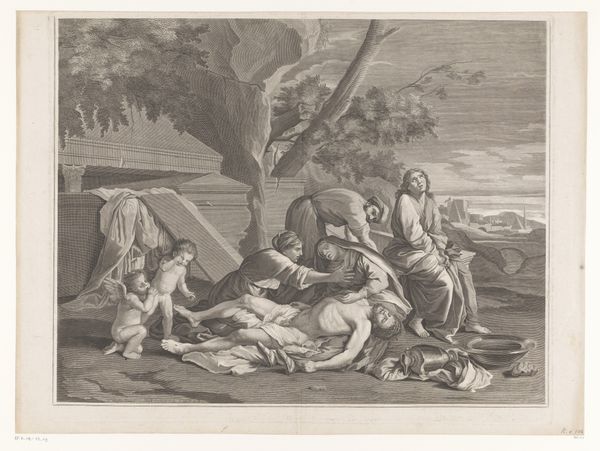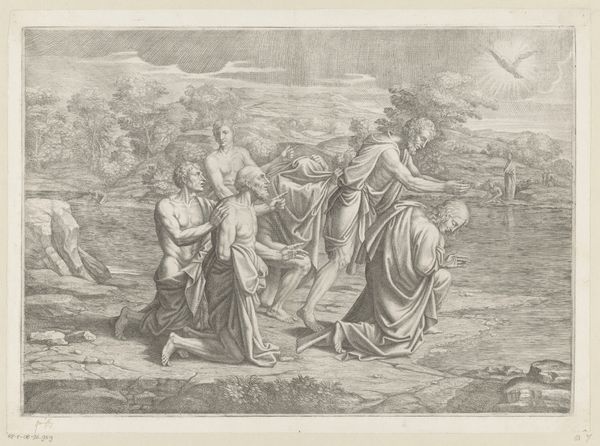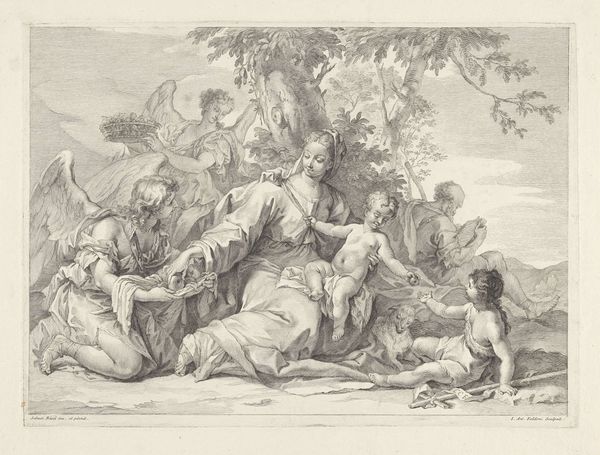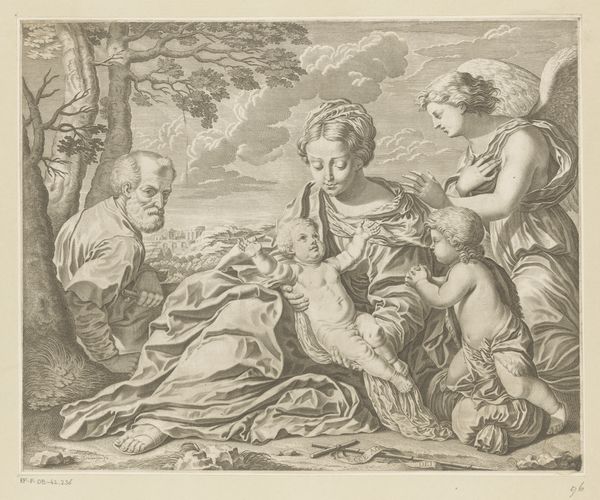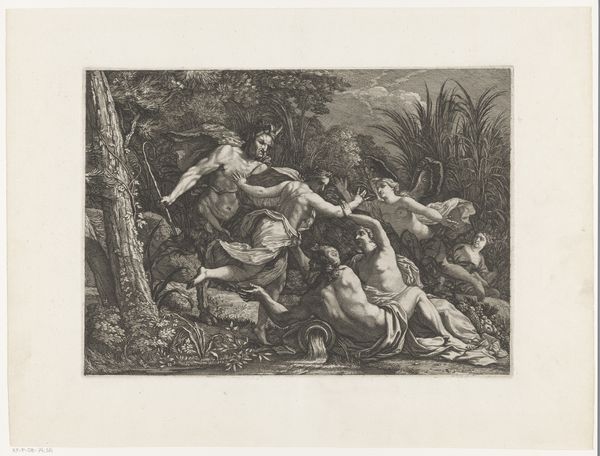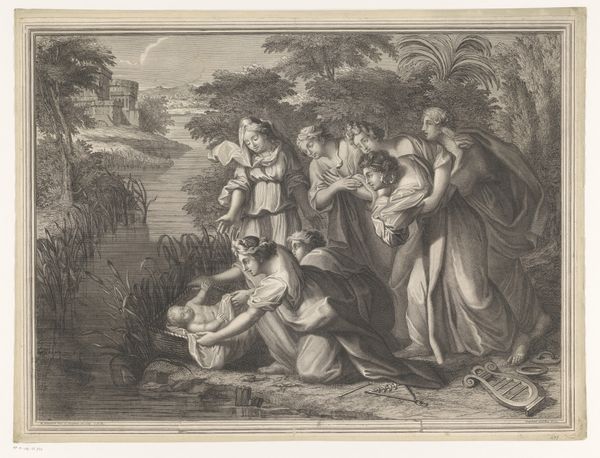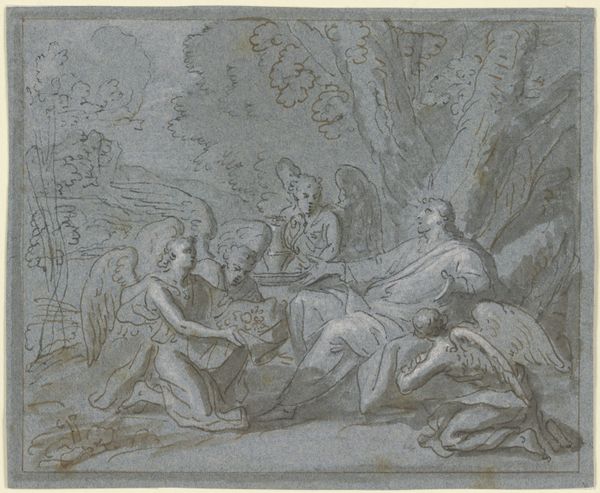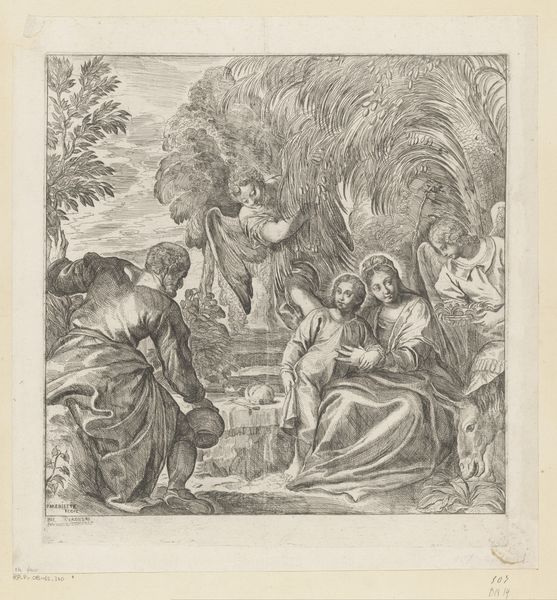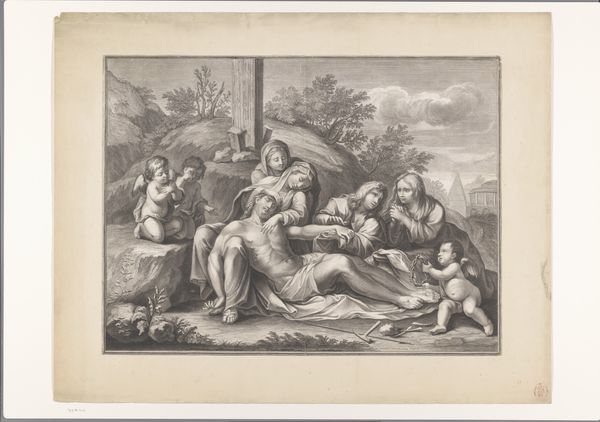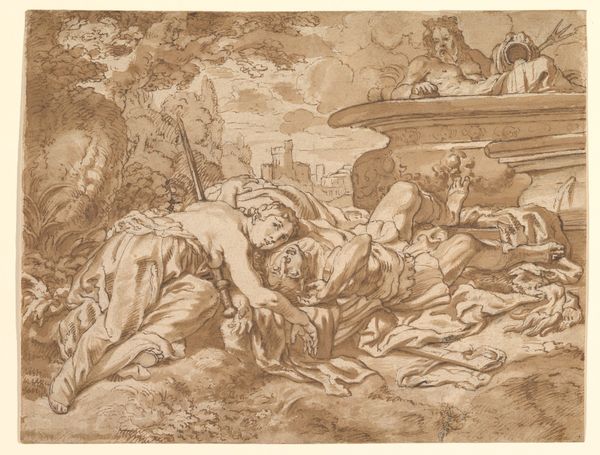
Jupiter als kind gevoed met melk van de geit Amalthea 1645 - 1683
0:00
0:00
print, engraving
#
ink drawing
#
baroque
# print
#
figuration
#
line
#
history-painting
#
engraving
Dimensions: height 291 mm, width 389 mm
Copyright: Rijks Museum: Open Domain
Editor: This engraving from sometime between 1645 and 1683, titled "Jupiter als kind gevoed met melk van de geit Amalthea," is by Guillaume Chasteau. The line work is so intricate! It feels very classical but also strangely grounded. What strikes you about it? Curator: Well, consider the labour involved. Chasteau's skill isn’t just about aesthetics; it's a *product* of specific economic and social structures. Engraving like this demanded rigorous training within a workshop environment, where skills were passed down, commodified, and linked to a patron system that reinforced power. What can you say about the depiction of Amalthea? Editor: The goat Amalthea is so central, actually producing something - milk - yet is still a part of this godly, heroic scene, as if its labor has significance! Curator: Precisely! Baroque art often masks the process of production under layers of ornamentation. Yet, here we can see the tension: between the 'high' subject matter, Jupiter's origin story, and the 'low' reality of needing nourishment produced through animal husbandry. Where do you think the artist got their materials from? Editor: Well, paper and ink are everyday materials, especially when used for printed images. Maybe it served as a cheap alternative to a painting? And circulated ideas more widely? Curator: Exactly. The material conditions dictated that engravings became accessible and reproducible, disrupting traditional hierarchies. They carried stories but were also commodities in themselves, cheap compared to paintings and disseminated widely. Think about it: Each impression circulated challenges traditional notions tied with unique artwork or its market value! Editor: I hadn't thought about the engraving as a challenge to paintings before. It changes how I see it. Thanks! Curator: It reveals the dynamic interplay between artistic skill, economic forces, and the dissemination of ideas. It really makes you appreciate the physical *thingness* of art!
Comments
No comments
Be the first to comment and join the conversation on the ultimate creative platform.

